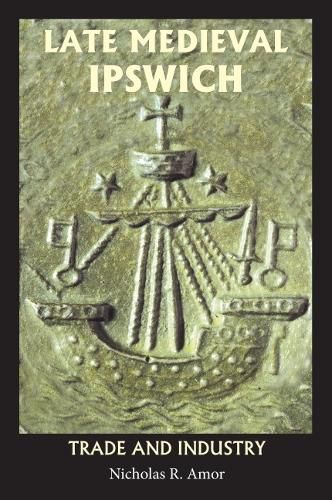Readings Newsletter
Become a Readings Member to make your shopping experience even easier.
Sign in or sign up for free!
You’re not far away from qualifying for FREE standard shipping within Australia
You’ve qualified for FREE standard shipping within Australia
The cart is loading…






A detailed study of Ipswich at a time of great growth and prosperity, highlighting the activities of its industries, merchants and craftsmen.
Ipswich in the late Middle Ages was a flourishing town. A wide range of commodities passed through its port, to and from far-flung markets, bought and sold by merchants from diverse backgrounds, and carried in ships whose design evolved during the fourteenth and fifteenth centuries. Its trading partners, both domestic and overseas, changed in response to developments in the international, national and local economy, as did the occupations of its craftsmen, with textile, leather and metal industries of particular importance.
However, despite its importance, and the richness of its medieval archives, the story of Ipswich at the time has been sadly neglected. This is a gap which the author here aims to remedy. His careful study allows a detailed picture of urban life to emerge, shedding new light not only on the borough itself, but on towns more generally at a crucial point in their development and during a period of growing affluence when ordinary people enjoyed an unprecedented rise in standards of living and the benefits of what might be termed our first consumer revolution.
$9.00 standard shipping within Australia
FREE standard shipping within Australia for orders over $100.00
Express & International shipping calculated at checkout
A detailed study of Ipswich at a time of great growth and prosperity, highlighting the activities of its industries, merchants and craftsmen.
Ipswich in the late Middle Ages was a flourishing town. A wide range of commodities passed through its port, to and from far-flung markets, bought and sold by merchants from diverse backgrounds, and carried in ships whose design evolved during the fourteenth and fifteenth centuries. Its trading partners, both domestic and overseas, changed in response to developments in the international, national and local economy, as did the occupations of its craftsmen, with textile, leather and metal industries of particular importance.
However, despite its importance, and the richness of its medieval archives, the story of Ipswich at the time has been sadly neglected. This is a gap which the author here aims to remedy. His careful study allows a detailed picture of urban life to emerge, shedding new light not only on the borough itself, but on towns more generally at a crucial point in their development and during a period of growing affluence when ordinary people enjoyed an unprecedented rise in standards of living and the benefits of what might be termed our first consumer revolution.